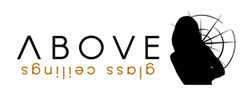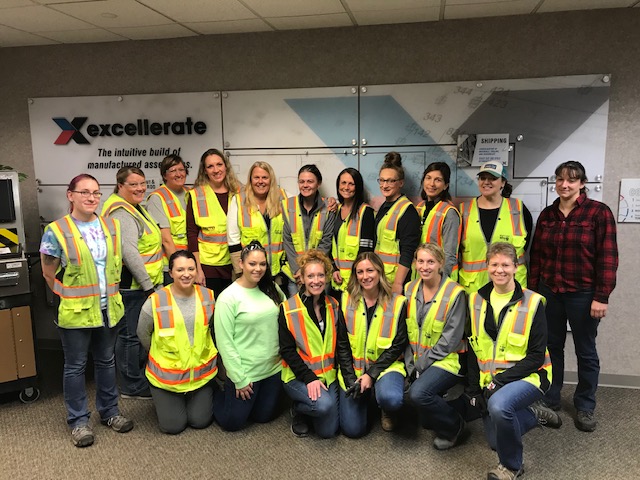Changing the Narrative for Women in Construction
"It’s no secret that the construction industry is male-dominated. For starters, just one in ten construction workers in the US are female. In construction trades, the number is even lower — there’s less than one woman to every 20 men."
Nonetheless, there are plenty of positives about being a woman in construction. Compared to other industries, construction has a narrow gender pay gap. According to The National Association of Women in Construction, females in the construction industry earn 99.1% of what their male counterparts are making. (For comparison — on average, women in the US earn 85% of what men earn.) The larger issue is the rate of promotions for women versus men. The upper ranks in the industry have fewer than 1% women.
Clearly, there’s still more work to do, and to help forward the conversation, we recently held a virtual panel featuring women in construction, including:
Amanda Gillespie, Geographical Construction Operations Manager, Infrastructure Construction at Facebook
Kaitlin Frank, Superintendent at Dome Construction
Kim Bates, Vice President and CIO at Webcor, Nancy Novak, Chief Innovation Office at Compass Data Centers
The discussion was moderated by Amy Marks, Head of Industrialized Construction Strategy & Evangelism at Autodesk.
Each woman shared her experience in the field, along with valuable insights on how we as an industry can grow and make meaningful progress towards diversity and inclusion.
Have a look at what they had to say.
How to Attract More Women to the Construction Industry
When it comes to the topic of women in construction, the most pressing issue to address is the fact that there are so few females in the industry. With the construction industry expected to see an 11% workforce growth from 2018 to 2028, how do we ensure that more women are brought into the fold?
The answer, according to our panelists, lies in the three things: starting young, reframing people’s perceptions, and increasing the visibility of women in construction.
Start Young
Many in the panel agreed that one of the first steps to getting women interested in construction is to cultivate their enthusiasm while they’re young.
“We need to start at a young age,” says Kaitlin Frank. “We can teach young women that they can go down this route and succeed.”
She adds that part of doing that means emphasizing the fact that construction isn’t just about power tools or dirt. “Construction is not just about swinging a hammer. It involves technology and a lot of management — there’s a lot that goes into it today.”
Reframe the Messaging Around Construction
When the word “construction” comes up, many people picture sites filled with workers in hardhats operating large machinery. And while that view is accurate, it’s not the only thing that construction is about.
To bring more women into this field, the panel agreed that the industry needs to highlight the other dimensions of having a career in construction.
For example, a major part of construction is to come up with creative solutions. As Kim Bates points out, “the beauty of construction is that you’re faced with opportunities to be creative when solving complex problems. And, when you can do that with a diverse perspective from a collection of different people, it’s awesome. I think we have to continue to share successes specifically by women, outside of our industry.” There’s a strong business case for diversity bringing about more innovation, better problem solving, and therefore more profitability.
Be Proud and Highly Visible
It’ll be difficult to draw in more women into the construction industry if there aren’t any prominent female figures or role models.
For this reason, panelists commented that women who are currently in construction should strive to increase their visibility within and outside the industry.
“Be more visible,” advises Amanda Gillespie.
“Show that a woman can be in construction and be successful. You can be an example and a resource for women.”
Don’t be afraid to stand out, she adds. “Be proud of who you are and raise awareness.”
Qualifiers: Healthy or Harmful?
Another topic of discussion was whether or not it’s okay to use qualifiers when referring to women in construction. Should teams spotlight or emphasize their female colleagues because they’re women or is this doing more harm than good?
Our panelists had varying views on this topic.
According to Gillespie, it’s a case-by-case basis. Hashtags like #WomenInConstruction are good when they’re used to elevate women and drive awareness. However, qualifiers become problematic when they’re used in a patronizing way or in a manner that expresses disbelief.
She recalled one situation where a qualifier was used in an almost condescending way. “I had a colleague and somebody actually came up and said, ‘Hey, I heard you guys got substantial completion. That’s quite an accomplishment, especially for a black woman.’ It was like there was no way she could; like it was a miracle.”
Other panelists felt that qualifiers are necessary — at least for the time being.
“I think for now the qualifier is significant,” says Bates. “I think we have to acknowledge, promote and celebrate when we’re recognized because it’s a white male-dominated industry; like Amanda’s example, it was almost unheard of that a black woman found success in her expected role.”
She continues, “we have to keep on talking about it until we’re tired of it, or until it’s popular – or maybe the “norm”. We’re not there yet. We have to share and educate the industry about the talents of women in a space that has historically been male dominated.”
“The qualifier is significant, as well as the hashtag and anything else that we can do to recognize the minorities and underrepresented communities that are in this industry — like women, black people/POC (people of color), lesbians. All of these groups are so significant that we have to continue to talk about it until it is either equal with equity or maybe we’re the majority, one day.”
It’s also worth noting that qualifiers can be used to a woman’s advantage.
“I feel like being a woman in construction is like a superpower,” shares Frank. “You can use it to your advantage.”
She discusses how being polite (which is commonly attributed to females) can go a long way when working on projects.
“On a jobsite, it’s amazing how far ‘please’ and ‘thank you’ will go and it’s not heard often enough. The field crews are my family and they treat me with respect. They’re protective of me and I’m protective of them, and it goes back and forth.”
How Construction Firms Can Be More Diverse and Inclusive
There are several action steps that construction professionals — both men and women — can do to promote diversity and inclusion in the industry. Some of the most notable points brought up in the discussion include:
Champion Other Women
Giving women a voice is important, says Nancy Novak. “I encourage teammates, both women and men, to amplify the voices of the women and underrepresented folks in the room who don’t get to be heard as often.”
“We have to continue to support each other, lift each other up,” adds Bates. “Advocate for women whenever possible personally and professionally. Complement each other. Say hello. Smile. Give high fives. When you do that to others and you see their response, it just makes you feel good as well. So we have to continue to inspire, be positive, and encourage one another.”
Amy Marks weighed in and emphasized the importance of women in leadership. Ideally, construction firms should have females in leadership roles and if this isn’t the case, then companies must find women-led businesses to support.
“If you don’t have a female CEO at least hire a company that has a woman CEO so that others in your organization can see what a female CEO looks like,” says Marks.
Pay Attention to Vocabulary
“‘Vocabulary builds culture’ has been my mantra for years,” explains Gillespie. “The words we use tell people what is okay and what is not. For example, don’t refer to yourself or other women as the ‘girls,’ because when you’re giving people permission to think of you as less mature or unequal.”
This goes both ways, when addressing men as well, she adds. “Don’t use those nomenclature phrases that are out there, such as ‘He’s a stud’ or ‘Grow a pair’…. all phrases that are commonly thrown around construction.”
“Those phrases perpetuate sexism in a way that gives other people permission to use sexism in our space.”
Set the Right Expectations
According to Novak, part of overcoming biases is to educate men and manage expectations. She recalls an example when after hearing her talk about a topic she was excited about, a male colleague said she was being too emotional and needed to calm down.
So she had to educate him by explaining that her voice just naturally goes up when she’s excited. “I said to him, ‘Hey, I just need you to know that my DNA is set up to where when I’m passionate about something, the octave of my voice goes up a little bit and I talk really fast. And I don’t know how to change that. So I’m hoping you’re going to get used to it.’”
“And after doing that, I thought, ‘so that’s how it is.’ If I had learned early in my career that I could manage expectations that way, it would’ve helped me out quite a bit.”
Those are just one of the tips that she’s used as a leader to help other women find their voice and mentor men.
Bridging the Wage Gap
How can females ensure that they’re getting paid as much as men? According to Bates, the solution is to “research, research, research.”
“You have to go with your facts, talent, competencies, and expertise. See to it that you’re doing your research and making sure that it’s equitable. When it’s not, you need to have a conversation. Then you have to decide if it’s worth staying because of the results of that conversation or if you’re made whole. And I think you just have to go into it strong, confident, and informed with data.”
It’s also a matter of talking to others and having honest conversations about money, says Marks. “I think before you take a job, you have to really run it by a bunch of people. ‘I’m taking this role, what do you think of the compensation?’ or ‘How do I show my value tangibly for this?'”
She adds, “we have to make that more socially acceptable and we need to really get some feedback from our peers and from people above us as well.”
Novak agrees. “I want you all to share what you know with other women. Something along the lines of, ‘Okay, like I’ve gotten offers with these different firms.’”
“I share because I want people to know what’s out there and I want women to know their starting points.”
Bringing It All Together
Improving diversity and inclusion in construction takes work and requires contributions from men and women alike. To attract more women, we need to start exposing people to the beauty of construction while they’re at a young age. The industry also needs to change how the public views construction work. It’s not just about hardhats and machinery; construction is also about technology, management, and creativity.
Last but not least is empowering females who are already in the industry. Put them in leadership positions and champion them whenever possible.
We won’t solve gender issues in construction overnight, but taking the steps above consistently will make a huge difference.
By: Alyssa Jaber

